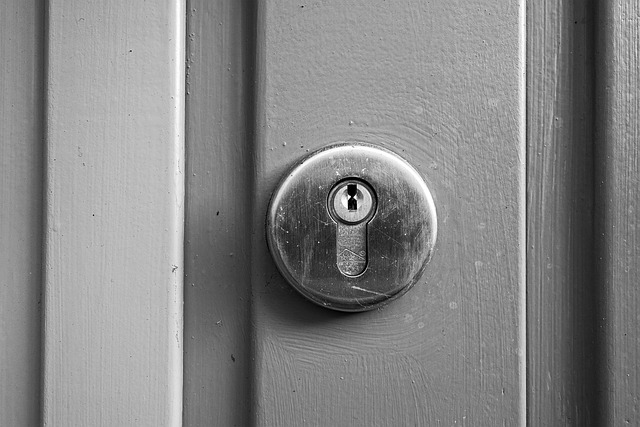Solar-powered cameras offer a durable and sustainable solution for security in rugged, remote locations with unreliable power sources. Their energy independence, superior construction, and minimal maintenance make them cost-effective alternatives to conventional systems. When selecting solar-powered cameras, consider factors like durability, water resistance, high-efficiency panels, and smart energy management for optimal performance in harsh environments. Strategic planning, regular maintenance, and advanced monitoring ensure reliable security solutions tailored to challenging conditions.
In rugged environments, reliable security is paramount. Traditional systems often falter due to power constraints and harsh conditions. Enter solar-powered cameras – a game-changer for enhancing safety in remote locations. This article explores how professional-grade solar-powered security offers a robust solution. We’ll delve into the unique challenges of rugged terrain, the benefits of renewable energy, essential features to consider, and practical strategies for implementation and maintenance, ensuring optimal performance for these advanced cameras.
- Understanding the Challenges of Rugged Environments
- The Advantages of Solar-Powered Cameras
- Key Features to Look For in Professional-Grade Equipment
- Implementation and Maintenance Strategies for Optimal Performance
Understanding the Challenges of Rugged Environments

Rugged environments present unique challenges for traditional security systems, often characterized by harsh weather conditions, remote locations, and terrain that is difficult to access or monitor. These environments demand robust and reliable security solutions that can withstand extreme temperatures, heavy rainfall, high winds, and potential physical damage. Solar-powered cameras offer a promising solution to these challenges. By leveraging renewable energy from the sun, these cameras can operate autonomously in off-grid locations, eliminating the need for complex infrastructure or frequent maintenance.
Moreover, solar-powered security systems are particularly well-suited for rugged areas as they do not rely on conventional power sources that may be unavailable or unreliable. This feature is crucial for ensuring continuous surveillance and monitoring without interruption. With their energy efficiency and durability, solar-powered cameras provide a cost-effective and eco-friendly alternative to traditional security setups, making them an ideal choice for protecting remote sites, critical infrastructure, and valuable assets in challenging environments.
The Advantages of Solar-Powered Cameras

Solar-powered cameras offer a range of advantages for rugged environments, making them an attractive option for security systems in remote or off-grid locations. One of their key benefits is sustainability and cost-effectiveness. These cameras utilize renewable energy from the sun, eliminating the need for traditional electricity sources, which can be expensive to install and maintain in harsh conditions. This independence from grid power ensures consistent operation, even in areas with inconsistent access to conventional energy.
Moreover, solar-powered cameras are highly durable and require minimal upkeep. Their design often incorporates weatherproof housing, making them capable of withstanding extreme temperatures, high humidity, and other challenging environmental factors. This rugged construction reduces the need for frequent replacements or repairs, contributing to long-term cost savings for users.
Key Features to Look For in Professional-Grade Equipment

When considering professional-grade solar-powered security for rugged environments, several key features should top your list. First and foremost, durability is paramount; these devices need to withstand extreme weather conditions and potential physical damage. Look for sturdy construction and robust materials that can handle harsh environments. Water resistance and dustproof ratings are essential, especially in desert or coastal regions.
Next, longevity of power source is critical since solar-powered cameras rely on sunlight. High-efficiency solar panels with ample surface area can ensure consistent power generation even during cloudy days or partial shade. Advanced batteries with deep cycle capabilities allow for continuous operation over extended periods without needing frequent recharging. Additionally, smart energy management systems that optimize power usage and include motion detection will enhance the camera’s overall performance and efficiency.
Implementation and Maintenance Strategies for Optimal Performance

Implementing professional-grade solar-powered security systems in rugged environments requires careful strategic planning. The first step is to conduct a thorough site assessment to identify energy needs, potential obstacles, and optimal placement for solar panels and solar-powered cameras. This involves understanding the region’s weather patterns, sunlight exposure, and environmental conditions to ensure maximum energy generation. Once installed, regular maintenance is key to achieving optimal performance. A structured maintenance schedule includes cleaning solar panels of any debris or dust, checking connections for loose or damaged wires, and inspecting batteries for signs of corrosion or wear. Regular software updates for control systems and cameras also play a crucial role in maintaining seamless operation and enhancing security measures.
Additionally, integrating advanced monitoring systems can help optimize performance and facilitate proactive troubleshooting. These systems allow users to remotely monitor energy levels, camera feeds, and system status, enabling swift action in case of any anomalies or maintenance requirements. By combining strategic implementation with diligent maintenance practices, solar-powered cameras offer a reliable, sustainable, and cost-effective security solution tailored for challenging environments.
Solar-powered cameras offer a robust solution for rugged environments, addressing challenges with reliable security. Their advantages include remote deployment, reduced maintenance, and sustainable energy, making them ideal for demanding locations. When selecting professional-grade equipment, focus on durable construction, advanced features like HD video and motion detection, and easy integration. Effective implementation and regular maintenance ensure optimal performance, maximizing the benefits of solar-powered cameras in these harsh settings.
